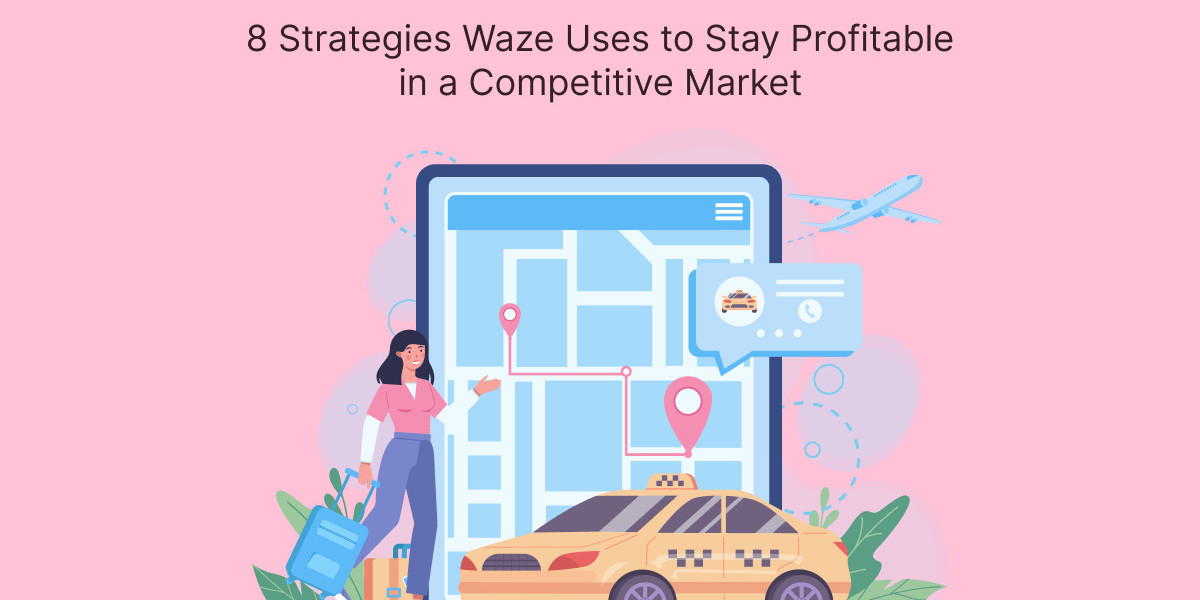In the rapidly evolving landscape of mobile navigation and mapping services, Waze has carved out a unique niche for itself. Launched in 2006 and later acquired by Google in 2013, Waze has transformed from a simple navigation app into a community-driven platform that offers real-time traffic updates and route optimization. However, maintaining profitability in a competitive market filled with heavyweights like Google Maps and Apple Maps requires strategic innovation and adaptability. Discover how Waze maintains profitability in a competitive market with innovative strategies! Uncover insights on the successful Waze business model today. In this blog post, we will explore eight strategies that Waze employs to stay profitable amidst fierce competition.
1. User-Generated Content
Waze thrives on user-generated content, allowing users to report traffic conditions, accidents, road closures, and hazards in real time. This community-driven approach not only enhances the app’s accuracy and reliability but also fosters a sense of community among users. By leveraging the power of its user base, Waze is able to provide up-to-date information that competitors struggle to match.
Building a Community
Waze encourages user participation through gamification features such as points, levels, and achievements. This engagement strategy incentivizes users to contribute more frequently, which enriches the data pool available to all users. The more active the community, the better the app becomes, creating a self-reinforcing cycle of growth and user satisfaction.
2. Real-Time Traffic Data
One of Waze's standout features is its real-time traffic data, which is collected from users driving on the road. This information is invaluable for providing accurate route suggestions and timely alerts about traffic jams or delays. By continuously updating its traffic database, Waze can offer alternative routes that save users time and frustration.
Utilizing Crowdsourced Information
The reliance on crowdsourced information enables Waze to respond quickly to changing traffic conditions. Unlike traditional navigation apps that rely on static data, Waze’s dynamic approach helps users avoid congestion and find faster routes. This adaptability not only enhances user satisfaction but also positions Waze as a leader in real-time navigation.
3. Location-Based Advertising
Waze generates significant revenue through location-based advertising, targeting users with relevant promotions as they navigate. Businesses can create ads that appear when users approach their locations, effectively driving foot traffic and increasing sales.
Sponsored Locations and Pins
Waze’s advertising model includes sponsored locations and pins, which allow businesses to promote their services directly within the app. For example, as a user nears a gas station or restaurant, they may see a promotional offer or advertisement for that business. This targeted approach not only provides value to advertisers but also enhances the overall user experience.
4. Partnerships with Local Businesses
To enhance its advertising capabilities, Waze actively partners with local businesses to offer exclusive deals and promotions. This strategy benefits both users and businesses, as it encourages users to stop at participating locations while providing businesses with increased visibility.
Community Engagement
By partnering with local businesses, Waze fosters community engagement and support. Users appreciate the ability to discover nearby deals, which increases their loyalty to the app. This strategy helps Waze establish strong relationships within communities, enhancing its brand image and user retention.
5. Data Monetization
Waze collects vast amounts of data related to traffic patterns, road conditions, and user behavior. This data is not only valuable for enhancing the app’s performance but can also be monetized by selling insights to third parties such as urban planners, local governments, and businesses looking to improve their services.
Partnerships with Government Agencies
Waze collaborates with government agencies to provide traffic insights and reports, helping them make informed decisions about infrastructure improvements and urban planning. These partnerships not only generate revenue but also position Waze as a key player in improving urban transportation systems.
6. Integration with Other Platforms
Waze recognizes the importance of integration in today’s digital landscape. The app can connect with various third-party services, such as ride-sharing platforms and music apps, enhancing its functionality and user experience. This integration not only keeps users engaged but also opens up additional revenue opportunities.
Collaborations with Ride-Sharing Services
Waze has established collaborations with ride-sharing services like Uber and Lyft, allowing drivers to seamlessly switch between apps while navigating. This integration provides additional value to users, ensuring they can access the best possible routes while also generating revenue for Waze through partnership agreements.
7. Premium Features
While Waze is primarily a free app, there are opportunities for premium features that can provide additional revenue streams. Though Waze has not heavily focused on this area, introducing features like ad-free navigation, advanced route planning, or exclusive traffic insights could appeal to a segment of users willing to pay for enhanced functionality.
Subscription Model Potential
A subscription model for premium features could provide a consistent revenue stream for Waze. By offering tiered pricing based on feature access, Waze can cater to different user preferences and needs. This approach not only diversifies revenue sources but also helps sustain profitability in a competitive market.
8. Focus on User Experience
Finally, Waze’s commitment to providing an exceptional user experience is crucial to its profitability. The app continuously evolves based on user feedback, ensuring that it meets the changing needs of its audience. From user interface enhancements to new features, Waze prioritizes creating a seamless and enjoyable experience.
Regular Updates and Improvements
Waze regularly releases updates that include bug fixes, performance improvements, and new features. This dedication to continuous improvement helps maintain user satisfaction and retention, ensuring that Waze remains a top choice among navigation apps.
Conclusion
Waze’s ability to stay profitable in a competitive market is a testament to its innovative strategies and adaptability. From leveraging user-generated content and real-time traffic data to implementing effective advertising partnerships and community engagement initiatives, Waze has developed a multifaceted approach to success. Discover how Waze thrives in a tough market with these 8 proven strategies! Learn from the best in on-demand app development company success. As the navigation landscape continues to evolve, Waze’s commitment to enhancing user experience and exploring new revenue opportunities will be key to its ongoing profitability and growth. By understanding these strategies, entrepreneurs and businesses can gain valuable insights into how to thrive in competitive industries and create sustainable business models.








